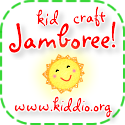After a bit of looking over the weekend we realized that although the liquid-holding body of our sippy cups were phthalate and Bisphenol-A (BPA)-free, the lids weren't. Further, our daughter's pacifiers have BPA in the shield that holds the nipple and that...basically everything in our house has something bad in it. After throwing out the cups and switching pacifiers (we're going with the Evenflo Mimi since the nipple shape seems a lot like our standard MAMs), we're still left wondering what else is lurking. Here are some of the surprising sources we found in our trip around the internet:
- Food cans are lined with an epoxy resin coating that almost always contains BPA. This is particularly concerning with acidic foods such as tomatoes, and for liquid baby formula (since BPA has been found to leach out into fatty substances in higher concentrations). Eden Foods is the only company that I know of (or could find) that has removed this from their packaging (for beans, at least, not for tomatoes).
- Rubbermaid has an area on their site devoted to helping you determine whether Rubbermaid products you already own are a source of BPA. For other kitchen items, you can check out the cheat sheet for safe(r) plastic containers, and Z Recommends has a super-comprehensive listing of what baby feeding products to avoid.
- Nearly all baby mattresses are wrapped in PVC. PVC is generally considered to be one of the most toxic and environmentally damaging plastics in use and off-gasses nasty stuff into the air (it's what makes new cars smell like, well, like new cars). Additionally, they're filled with urethane foam, which releases nasties like benzene, and coated with a fire retardant containing things like antimony and arsenic. You can get around this by purchasing a cotton, wool, or natural latex mattress.
- Tooth-colored composite fillings often contain BPA--some are composed of up to 90% BPA.
- Some plastic wraps contain phthalates. These are mainly commercial grade wraps; Saran Wrap, Glad Cling Wrap, and Diamant Food Wrap (Diamant is made of cornstarch and compostable) definitely do not. Also, some plastic cutting boards contain BPA or phthalates.
- Two of the baby teethers that we owned contained phthalates. We also have a number of rubber duckies (which our oldest daughter used to carry in her mouth as she crawled around the house); some rubber ducks have been found to contain very high levels of DEHA, a particularly nasty phthalate. Safe Mama has a guide to figuring out whether the teethers and pacifiers you're offering may contain BPA or phthalates and for choosing safe(r) options.
- Many personal care products contain phthalates (patently bad) and parabens (jury's still out on actual badness), including baby washes, lotions, and cosmetics. Safe Mama offers a cheat sheet for this too. To generally stay away from phthalates altogether, here is a guide to other products to avoid.
- Sunscreen often contains parabens and phthalates, as well as formaldehyde, and some potentially estrogenic compounds such as benzophenone, homosalate, and octyl-methoxycinnamate/octinoxate. Considering the relative amount of surface area on a baby, you can expect that their exposure to these chemicals by weight will be much higher. Cosmetics Database has a super-comprehensive list of sunscreens to buy, what to avoid, and best of all (for us living up in the mountains, that much closer to the sun) a listing of how accurate the SPF rating on the bottle is.
More from the collective:













